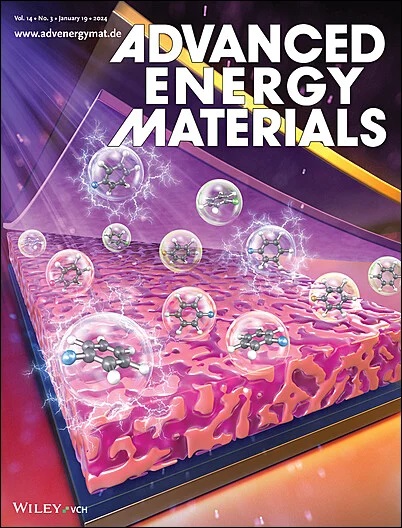Trifunctional P-Doping of FeS1-x for Greatly Enhanced Electrochemical Kinetics and Highly Resilient Li-S Batteries
IF 24.4
1区 材料科学
Q1 CHEMISTRY, PHYSICAL
引用次数: 0
Abstract
Defect engineering is a proven strategy for optimizing the catalytic performance of electrocatalysts in lithium-sulfur (Li-S) electrochemical systems. However, the introduction of vacancies, while enhancing electrocatalytic capacity, can also lead to degradation of electrochemical performance over prolonged cycles due to vacancy instability. This duality presents a significant challenge in the development of durable and efficient Li-S batteries, underscoring the need for strategies that can stabilize electrocatalytic defects. Herein, phosphorus atoms are introduced to partially occupy purposely introduced prior sulfur vacancies (VS) in FeS electrocatalysts, in the presence of the P3− anion at the VS sites leads to stabilized remaining vacancies and enhanced adsorption of lithium sulfide species, thereby greatly improving the in situ redox kinetics owing to effectively enhanced adsorption of lithium polysulfides (LiPSs) and over 30% reduction of the critical kinetic barrier in turning the soluble Li2S4 into the solid Li2S2. Ultimately, such synergistic triple-functionalities lead to significantly enhanced rate performance and markedly increased cycling stability and capacity retention. This work provides a novel route in utilizing higher-valency anion doping to stabilize electrocatalytic vacancy sites toward the effective improvement of the redox kinetics essential for practically competitive Li-S batteries.

三功能p掺杂FeS1-x对电化学动力学和高弹性Li-S电池的影响
缺陷工程是优化锂硫电化学系统中电催化剂催化性能的一种行之有效的策略。然而,空位的引入在增强电催化能力的同时,也会由于空位的不稳定性而导致长周期电化学性能的下降。这种两重性给开发耐用高效的锂电池带来了重大挑战,强调了稳定电催化缺陷的策略的必要性。本文引入磷原子部分占据FeS电催化剂中有意引入的硫空位(VS),在VS位点上P3−阴离子的存在导致剩余空位稳定,并增强了硫化锂的吸附。从而极大地改善了原位氧化还原动力学,因为它有效地增强了锂多硫化物(LiPSs)的吸附,并将可溶性Li2S4转化为固体Li2S2的临界动力学屏障降低了30%以上。最终,这种协同的三重功能显著提高了速率性能,显著提高了循环稳定性和容量保留。这项工作为利用高价阴离子掺杂来稳定电催化空位提供了一条新的途径,从而有效地改善实际竞争激烈的锂电池所必需的氧化还原动力学。
本文章由计算机程序翻译,如有差异,请以英文原文为准。
求助全文
约1分钟内获得全文
求助全文
来源期刊

Advanced Energy Materials
CHEMISTRY, PHYSICAL-ENERGY & FUELS
CiteScore
41.90
自引率
4.00%
发文量
889
审稿时长
1.4 months
期刊介绍:
Established in 2011, Advanced Energy Materials is an international, interdisciplinary, English-language journal that focuses on materials used in energy harvesting, conversion, and storage. It is regarded as a top-quality journal alongside Advanced Materials, Advanced Functional Materials, and Small.
With a 2022 Impact Factor of 27.8, Advanced Energy Materials is considered a prime source for the best energy-related research. The journal covers a wide range of topics in energy-related research, including organic and inorganic photovoltaics, batteries and supercapacitors, fuel cells, hydrogen generation and storage, thermoelectrics, water splitting and photocatalysis, solar fuels and thermosolar power, magnetocalorics, and piezoelectronics.
The readership of Advanced Energy Materials includes materials scientists, chemists, physicists, and engineers in both academia and industry. The journal is indexed in various databases and collections, such as Advanced Technologies & Aerospace Database, FIZ Karlsruhe, INSPEC (IET), Science Citation Index Expanded, Technology Collection, and Web of Science, among others.
 求助内容:
求助内容: 应助结果提醒方式:
应助结果提醒方式:


